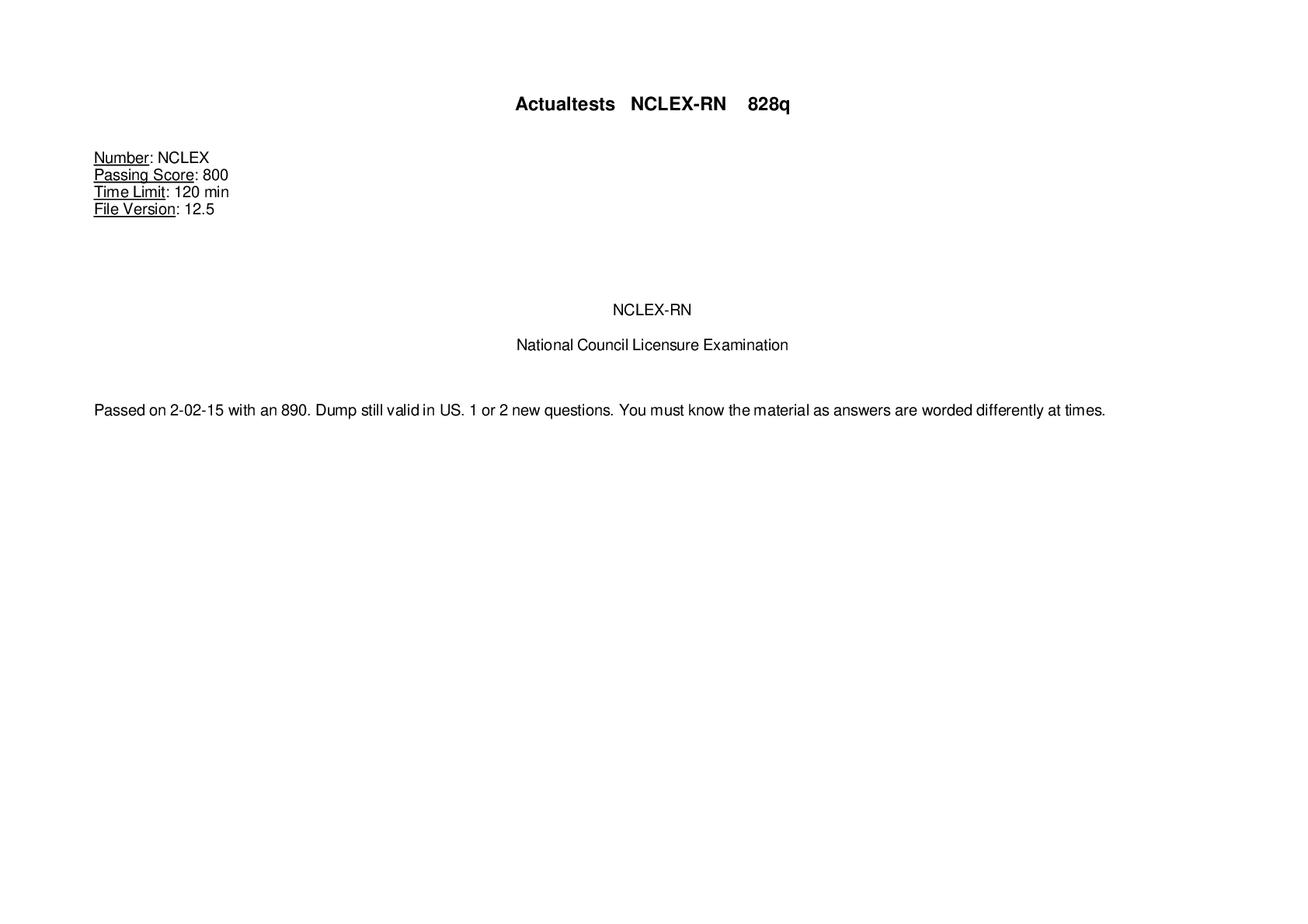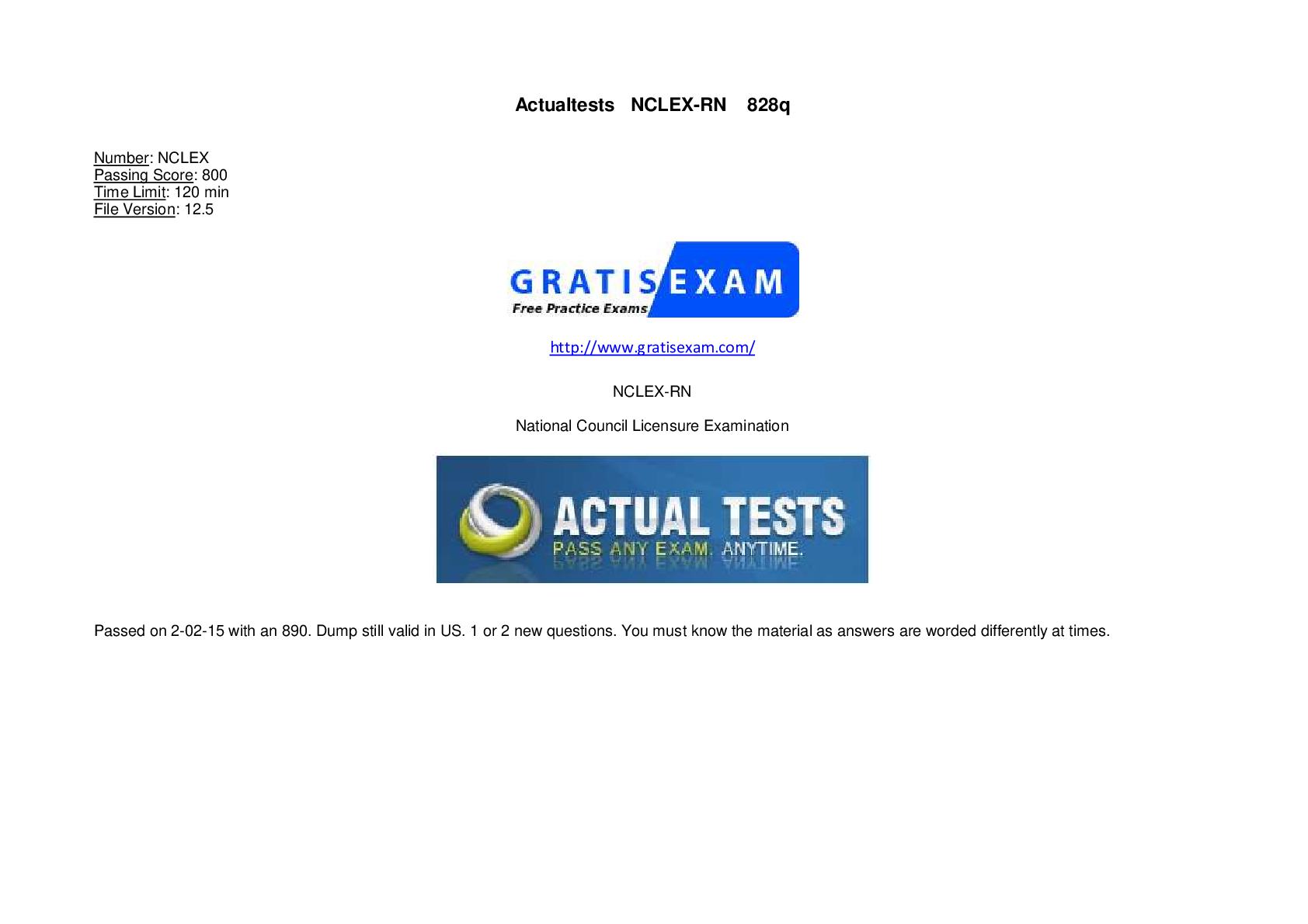Actual tests NCLEX RN P1
Course
Project Management
Subject
Chemistry
Category
Questions and Answers
Pages
424
Uploaded By
ATIPROS
Preview 5 out of 424 Pages


Download all 424 pages for $ 18.50
Reviews (0)
$18.50
